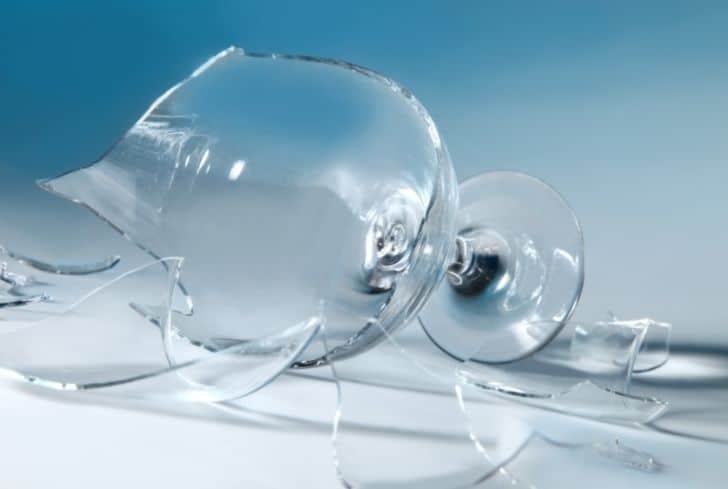Have you ever wondered if glass is sustainable? It is practically everywhere, from windows to doors and even walls. Mirrors are also made from glass, alongside other things we see and interact with daily.
So, is glass sustainable? Is it environmentally reasonable and friendly to manufacture and use more glass? Is it better than plastic, and more importantly, is making glass bad for the environment? Stick around to find out everything you need to know!
Is Glass Sustainable Material?
Without a doubt, glass is a sustainable material. This is because it is made from abundant natural resources such as limestone, soda ash, and sand. But that isn’t the only reason it is sustainable. You can also recycle glass limitless times, and the process happens fast; you can have a bottle back on the shelf within a month.
Yes, glass is a sustainable material because manufacturers can easily make more glass from sand and cullet, putting even less strain on our resources.
There are many reasons glass is a sustainable material. It is better for the environment compared to other packaging items like plastics. For one, glass has less negative impacts on the ecosystem during and after its degradation.
But of course, you must dispose of it properly to avoid harming yourself and other areas of biodiversity that may come in contact with it.
The process of manufacturing glass is also better for the environment compared to other options like plastics. Chemicals are less of an issue when manufacturing. Recycling glass is also enough to justify this claim.
A sustainable material is good for the environment in every regard, from the process of manufacturing to consumption and its afterlife.
Sustainability means the environment isn’t worse off after manufacturing and consuming the material. It is also worth mentioning that glass waste makes up a meager five percent of materials on landfills, but this is a blessing and a bane.
It is a bane because glass can last forever. In other words, it does not break down, ever. Therefore, improper disposal may go against sustainable standards.
Why is Glass a Sustainable Material?
Glass is a sustainable material for many reasons, but here is the summary. It can be recycled multiple times, conserves resources, is inert, and does not cause harm to the ecosystem. Without further ado, check out these concrete reasons glass is a sustainable material:
Glass is Recyclable
Any material that can be recycled has a plus point already. Recycling is a great way to dispose of waste without disrupting nature or affecting it negatively. But even better, a material that can be recycled countless times is beneficial to the environment and our resources because it indicates less consumption.
It also results in less waste because we can recycle it. The best part is that there are glass recycling facilities everywhere. Glass can be recycled within a month, and the product will be back on the shelf before you know it.
But even better, glass does not lose its value after numerous recycling cycles. Because of how it is created, recyclers can melt it to liquid and reshape it into almost anything!
Glass has an Inert Nature
Unlike packaging materials such as plastic and other synthetic packaging options, glass is chemically inert. This means it lacks artificial additives that may affect the health of users.
This characteristic makes it an excellent alternative for packaging food and medication, but those are not the only benefits. The chemically inert nature is also good for the ecosystem because even when users fail to dispose of a glass waste item in the recycling bin, it will not negatively impact the ecosystem. After all, there is no harmful substance to leech out.
In other words, toxic poisoning of the environment is not a concern with this ubiquitous material.
Glass is Better Than Plastic
Glass is sustainable because it is currently the lesser of two evils. If you had to choose between plastic and glass, choose glass.
Now, this is not to say that glass does not consume a significant portion of the earth’s silica, but compared with plastics and the effects of our consumption on the ecosystem, we would choose glass any day.
Glass Has Fewer Effects on Climate Change
Did you know that glass manufacturing requires 40 percent less energy consumption than other materials like plastics? Without a doubt, a significant amount of energy goes into melting sand, limestone, and soda ash into a liquid and consistent form. Still, environmentally conscious reforms have resulted in less fossil fuel consumption.
Ultimately, our manufacturing processes have fewer effects on the ozone layer, reducing the dangers of climate change.
Even when recycling takes place, less energy is consumed in the process.

Is Glass More Sustainable than Plastic?
Yes, glass is more sustainable than plastic for many reasons. Glass is the more environmentally conscious choice, starting with sourcing materials down to the final stages of the product’s lifespan.
Plastic is a by-product of petroleum, a non-renewable resource. Every year, millions of barrels of crude oil are consumed in the production of plastic.
There seems to be an ample supply of crude oil, and it looks as if we will never run out. However, it is a non-renewable resource, so the reserve will eventually diminish, especially if consumption continues at this rate. The reason is that plastic production is not the only consumer of petroleum resources but also the automobile industry, which takes more than fifty percent.
But again, there has been a massive shift from fuel-consuming vehicles to electricity-backed ones. This is a plus for the environment. Now, it remains the gradual replacement of plastic products with more sustainable options that will not deplete resources and negatively impact the ecosystem.
Sustainability can be understood to mean continuality, but it can also be a process whereby we control our manufacturing activities so that we don’t run out of non-renewable materials.
One way to do this is to turn to supplies that are limitless or appear to be, like sand and organic matter. And get this, glass as a sustainable commodity has been that way since the beginning of time. Even without man’s advanced manufacturing processes, obsidian was in existence.
Obsidian is created from cooled felsic lava, similar to heating sand at a high temperature until it melts. This is why the structures are the same, even though they are made from different resources.
Nature supports glass, so it is sustainable.
Another reason for the sustainability of glass over plastic is that the latter requires a more environmentally-draining manufacturing process. Statistics from 2010 show that a million barrels of oil were consumed in manufacturing plastic.
Now, consumption is not the only problem here but also the impact of that activity on the ecosystem. Burning fossil fuels is a significant cause of climate change because of the toxic gases that leech into the atmosphere.
Therefore, from the beginning of the life cycle of plastic to its demise, it is not a sustainable option. Health-wise, it is not advisable to continue using this packaging material from when it sits on the shelf in your pantry to when it degrades.
On the shelf in your pantry, plastic can leak chemicals into your food and other edible items. It is not chemically inert, unlike glass. Several toxic substances in plastic will also leech into the environment during degradation.
Thus affecting the ecosystem and not just your health. But do you know this isn’t the only downside to plastic use after its lifespan?
Plastic will leave microplastics behind. These tiny particles of plastic are easily transferrable from one location to another. They can travel for miles on end and often find their way into water bodies and the atmosphere. Get this – we consume microplastics and breathe them because they are small enough to dilute oxygen.
The negative impacts are numerous, which is why glass is more sustainable than plastic.
Is Making Glass Bad for the Environment?
Sadly, glass is bad for the environment in some regard. Starting with the manufacturing process, we cannot deny that this product requires a high temperature before it melts into a flexible structure that can be shaped into almost anything. A temperature of 1700°C is on the high side and may leave undesirable effects on the ozone layer.
However, the saving grace is that many batches of glass can be melted and produced simultaneously. But again, the temperature in the kiln must be maintained and constantly running, contributing to carbon emissions.
That’s not all.
Glass is also bad for the environment because the material is sourced from quartz, a non-renewable resource. Although the process does not require mining, it still eats into a somewhat limited supply.
Glass manufacturing results in the creation of toxic gases like carbon dioxide and nitrogen oxides, which create smog. And at the end of the day, these carbon emissions are caused by burning fossil fuels, which are non-renewable resources.
Conclusion
Glass is the lesser of two evils but has its environmental downers. Fortunately, we can recycle our glass waste with less energy consumption and within the shortest possible time.






